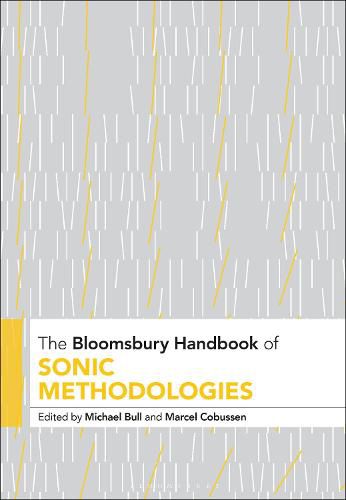Readings Newsletter
Become a Readings Member to make your shopping experience even easier.
Sign in or sign up for free!
You’re not far away from qualifying for FREE standard shipping within Australia
You’ve qualified for FREE standard shipping within Australia
The cart is loading…






The field of Sound Studies has changed and developed dramatically over the last two decades involving a vast and dizzying array of work produced by those working in the arts, social sciences and sciences. The study of sound is inherently interdisciplinary and is undertaken both by those who specialize in sound and by others who wish to include sound as an intrinsic and indispensable element in their research. This is the first resource to provide a wide ranging, cross-cultural and interdisciplinary investigation and analysis of the ways in which researchers use a broad range of methodologies in order to pursue their sonic investigations. It brings together 49 specially commissioned chapters that ask a wide range of questions including; how can sound be used in current academic disciplines? Is sound as a methodological tool indispensable for Sound Studies and what can sound artists contribute to the discourse on methodology in Sound Studies? The editors also present 3 original chapters that work as provocative ‘sonic methodological interventions’ prefacing the 3 sections of the book.
$9.00 standard shipping within Australia
FREE standard shipping within Australia for orders over $100.00
Express & International shipping calculated at checkout
The field of Sound Studies has changed and developed dramatically over the last two decades involving a vast and dizzying array of work produced by those working in the arts, social sciences and sciences. The study of sound is inherently interdisciplinary and is undertaken both by those who specialize in sound and by others who wish to include sound as an intrinsic and indispensable element in their research. This is the first resource to provide a wide ranging, cross-cultural and interdisciplinary investigation and analysis of the ways in which researchers use a broad range of methodologies in order to pursue their sonic investigations. It brings together 49 specially commissioned chapters that ask a wide range of questions including; how can sound be used in current academic disciplines? Is sound as a methodological tool indispensable for Sound Studies and what can sound artists contribute to the discourse on methodology in Sound Studies? The editors also present 3 original chapters that work as provocative ‘sonic methodological interventions’ prefacing the 3 sections of the book.